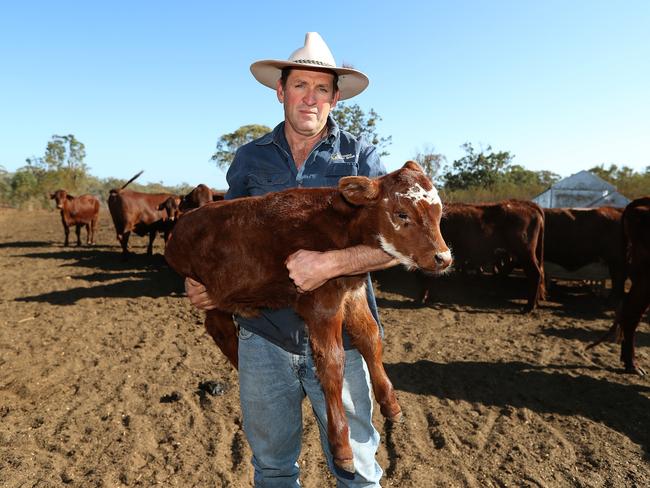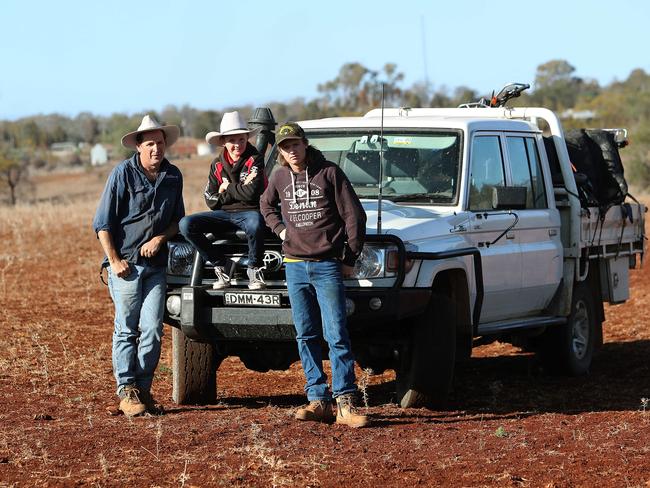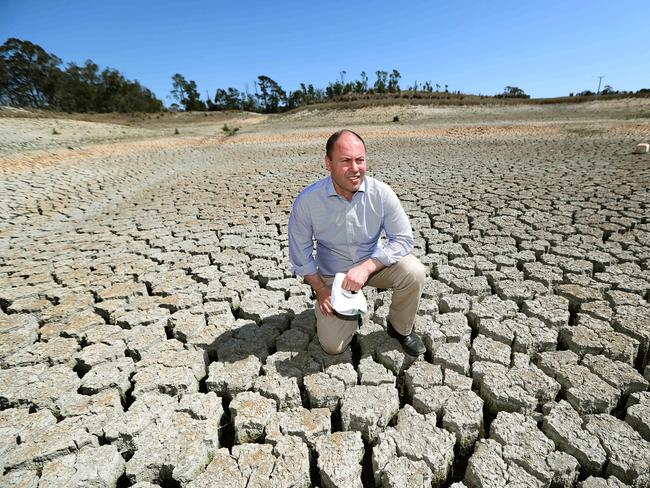Farmers left high and dry as drought loan scheme wrapped in red tape
Less than 12 per cent of a loan scheme touted as a major assistance for drought stricken farmers has actually gone out the door helping cash-strapped landowners.
NSW
Don't miss out on the headlines from NSW. Followed categories will be added to My News.
Less than 12 per cent of a loan scheme touted as a major assistance for drought stricken farmers has actually gone out the door helping cash-strapped landowners.
The Daily Telegraph can reveal just $233.16 million worth of loans have been approved for 244 applicants across the country, of a possible $2 billion for Farm Business Loans since the Regional Investment Corporation (RIC) started in July 2018.
The long term low interest loans are designed to help farmers doing it tough, described as “seriously helping farmers in hardship” by Drought Minister David Littleproud earlier this year.
But the uptake of the scheme has been slow, with the federal government blaming a lack of awareness about the loan, while farmers and the state point to complicated paperwork and prohibitive conditions as the problem.

Inverell farmer Alan Martin said he waited more than six months to be told he did not qualify for a $300,000 loan - after a RIC case manager initially indicated he was a “perfect candidate” for the scheme - pushing his operation to the brink of bankruptcy.
“Of course the books don’t look great at the moment, this far into the drought, everyone’s books are looking grim, but if we weren’t going to qualify then all that extra work and the strain of waiting was for nothing,” he said.
“A quick no isn’t necessarily a bad thing, we would have sold cattle earlier and made different decisions.”
Mr Martin’s application was primarily rejected because a large per cent of his land holdings were longterm leases rather owned.
“The RIC needed us to be in a better equity position than bank, so we would honestly have been better off just going to the bank in the first place,” he said.
Mr Martin, who is also raising five sons, said he spent more than $6,000 on accounting fees and more than 150 hours pulling together documents to apply for the loan and is now unsure how his cattle and crop farm will survive.

“It’s costing me $1100 a day to buy feed ... this is the worst drought by far and it’s getting to a point where there’s a chance we won’t get through it,” he said.
Mr Littleproud said the scheme was working to put pressure on loan rates offered to farmers by the big banks, but admitted the uptake of some Commonwealth assistance programs had not been as high as it could be.
“The reality is they are budgeted items and some of those programs have not been fully taken up, they are demand driven ... $144 million alone has been put out in NSW in RIC loans, they will continue to evolve,” Mr Littleproud said.
“So our commitment is about having an amount there that is there to support these communities get through this drought, they will be taken up as they are required and will continue to be spent.”
Mr Littleproud has repeatedly urged farmers not to “self assess” whether they qualify for assistance, but the time consuming paperwork required for many applications has become a significant burden for many farmers.

NSW Agriculture Adam Marshall said he had consistently heard feedback on the ground that many of the Commonwealth programs were “too difficult to access”.
“There’s no good having a huge pile of drought relief just sitting there on the table,” he said.
“What we need is that money in the pockets of farmers who are doing it tough with drought.”
Mr Marshall said his federal counterparts should follow the state, which introduced changes so farmers wouldn’t have to lodge new paperwork if they’ve already received assistance.
The federal government did announce some changes in a bid to cut back red tape last month, including no longer requiring a married couple to fill out two separate forms to access the Farm Household Allowance.
When asked if the delays experienced by Mr Martin could be better dealt with in the future, Treasurer Josh Frydenberg told The Daily Telegraph the government was listening to farmers’ concerns about excessive paperwork.
“We’ve been very conscious of the red tape burden and coming at a time when families are doing it tough,” he said.
“Where there are ways we can reduce the application challenges we will, bearing in mind that its taxpayer’s money and we’ve got to be very careful how that is dispensed.”
Mr Frydenberg yesterday wrapped up a three day drought listening tour with Mr Littleproud across some of the worst affected areas in NSW and Queensland, where they met with dozens of farmers and small business owners.
FUNDING NEEDED SOONER NOT LATER
Comment, Clare Armstrong
Images of dry cracked earth, empty paddocks and exhausted farmers can start to become white noise in the background of politics the longer a drought drags on.
Despite a recent commitment from the Federal Government to top up drought support funding, it is clear more money is needed.
Luckily there was no shortage of suggestions offered up to Treasurer Josh Frydenberg and Drought Minister David Littleproud as they embarked on a three-day tour of some of the worst-hit areas of NSW and Queensland this week.
The government has come under fire for its claim to be spending $7 billion on drought assistance measures — the lion’s share of which is a $5 billion Future Drought Fund that won’t deliver a cent before July 2020. Farmers across the state who are unable to grow crops or feed animals are right to question how that money will save them now.
But the government isn’t wrong to pursue a plan aimed at ensuring that the next time the country is hit by drought everyone will be more resilient.
The problem is that no matter what plan is set out for the future, right now farmers are taking their own lives, regional towns are on their knees, and thousands of livelihoods have been destroyed.
The real success of the trip will be in how effectively Mr Frydenberg makes the case for more financial assistance for struggling communities — after all as Mr Littleproud said at the beginning of the tour, that’s why he brought the “keeper of the cheque book” to the drought in the first place.
